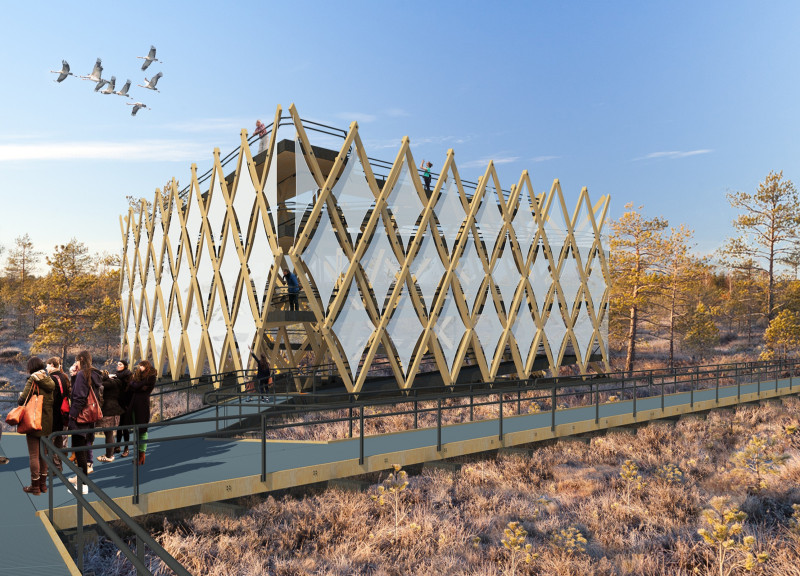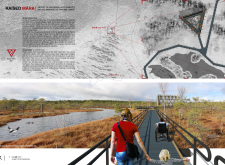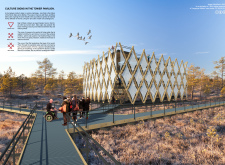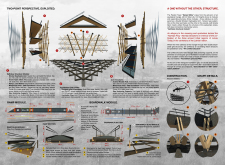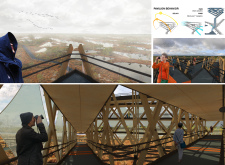5 key facts about this project
The Raised Māra Nature Awareness Pavilion Tower is located in Kemeri Park, Latvia, a region known for its rich natural beauty and biodiversity. This structure serves not only as an observation area but also as a space for education. It aims to deepen visitors' understanding of the unique ecosystems found within the park. The design draws from local mythology, particularly the figure of Māra, who represents nature and maternal protection. The project emphasizes accessibility, sustainability, and inviting community involvement.
Architectural Concept
The design integrates elements of nature and Latvian culture, reflecting the area’s character. The pavilion features an equilateral triangular shape, which symbolizes unity among Latvia’s ancient tribal regions. This form guides visitors through the space while encouraging a connection to the surrounding environment. It highlights how architecture can reflect cultural stories.
Structural Composition
The pavilion uses a Double Wooden Deployable Grid. This modular approach allows for open spaces that also maintain structural strength. The interconnected ramps promote ease of movement, making the pavilion accessible to everyone. Visitors can navigate through the structure comfortably, engaging with the educational aspects at their own pace.
Material Selection
Materials were chosen with care to ensure durability and sustainability. Treated glue laminated pine wood is used in the structural components, providing strength while blending with the park’s natural setting. Solid pine wood serves in the foundation grid and piles, also treated to resist decay. These selections not only enhance the structure's performance but also connect it visually and contextually to the landscape.
Details of Engagement
The pavilion culminates in a 360-degree observation platform that offers broad views of Kemeri Park’s diverse ecosystems. This platform invites visitors to immerse themselves in the scenery and fosters a deeper appreciation for nature. The way light interacts with the wooden surfaces creates an inviting atmosphere, encouraging reflection on the relationship between architecture and the environment. Each element of the design works together to engage the senses and connect visitors to the natural world surrounding them.


